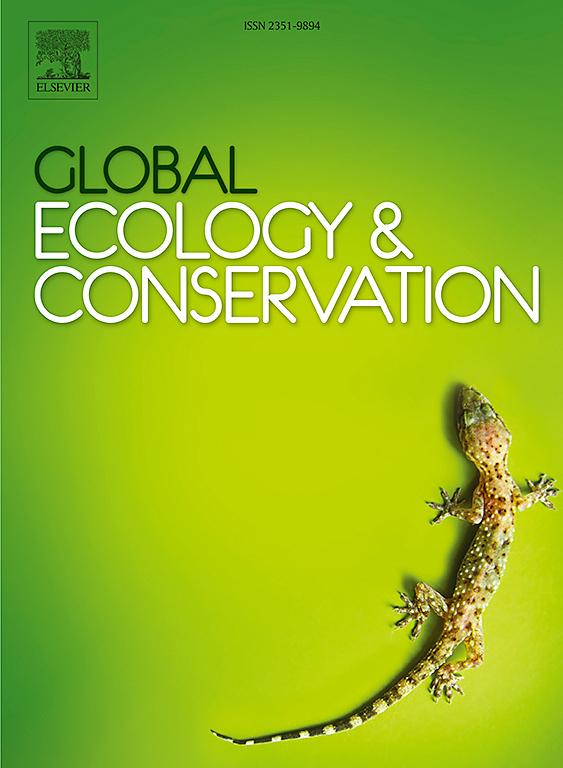Modelling the predation sequence of wolves hunting sheep: Implications for evaluating the effectiveness of preventive methods
IF 3.5
2区 环境科学与生态学
Q1 BIODIVERSITY CONSERVATION
引用次数: 0
Abstract
Although accounting for the sequential nature of the predation is useful to better understand predator-prey interactions, this approach has rarely been adopted in the context of large carnivore attacks on livestock. Here we developed a model of wolf (Canis lupus) predation that integrated its sequential nature and the effects of covariates. We used over 300 wolf observations obtained by thermal infrared cameras in hotspots of wolf predation on sheep in the French Alps to quantify the impact of the presence of livestock guarding dogs (LGDs), fencing and other environmental factors on the conditional probabilities of wolf approach and attack. Our data show that most often, only one or two wolves appear to be involved in predation on sheep, suggesting that the predator is unlikely to overwhelm the LGDs by sheer numbers. However, we detected no effect of LGDs or fencing on the predation sequence, possibly because observations of wolf behaviour were brief and subject to high variability among observers and years. Observers did not systematically record data and sometimes scored contradictory information. A posteriori power analysis revealed that the effects of LGDs or fencing would have been detected in our data if they halved and one-third the probability of approach and attack, respectively. We cannot draw general conclusions about the effectiveness of LGDs or fencing because our data were not random but collected in hotspots only. Nevertheless, our approach can be used to improve assessment of the effectiveness of preventive methods, a vital task for the conservation of large carnivores.
模拟狼捕猎羊的捕食顺序:对评估预防方法有效性的影响
尽管考虑捕食的顺序性质有助于更好地理解捕食者-猎物之间的相互作用,但这种方法很少被用于大型食肉动物攻击牲畜的情况。在这里,我们开发了一个狼(Canis lupus)捕食的模型,该模型集成了其顺序性质和协变量的影响。利用红外热像仪在法国阿尔卑斯山区狼捕食羊的热点地区采集的300多只狼的观测数据,量化了放牧犬、围栏等环境因素对狼接近和攻击条件概率的影响。我们的数据显示,大多数情况下,只有一两只狼参与了对羊的捕食,这表明捕食者不太可能以绝对的数量压倒lgd。然而,我们没有发现lgd或围栏对捕食顺序的影响,可能是因为对狼行为的观察时间很短,而且在观察者和年份之间存在很大的差异。观察员没有系统地记录数据,有时还得到相互矛盾的信息。后验功率分析显示,如果lgd或击剑的接近和攻击概率分别减半和三分之一,我们的数据中就会检测到lgd或击剑的影响。我们无法得出关于LGDs或围栏有效性的一般性结论,因为我们的数据不是随机的,而是在热点地区收集的。然而,我们的方法可以用来提高预防方法有效性的评估,这是保护大型食肉动物的一项重要任务。
本文章由计算机程序翻译,如有差异,请以英文原文为准。
求助全文
约1分钟内获得全文
求助全文
来源期刊

Global Ecology and Conservation
Agricultural and Biological Sciences-Ecology, Evolution, Behavior and Systematics
CiteScore
8.10
自引率
5.00%
发文量
346
审稿时长
83 days
期刊介绍:
Global Ecology and Conservation is a peer-reviewed, open-access journal covering all sub-disciplines of ecological and conservation science: from theory to practice, from molecules to ecosystems, from regional to global. The fields covered include: organismal, population, community, and ecosystem ecology; physiological, evolutionary, and behavioral ecology; and conservation science.
 求助内容:
求助内容: 应助结果提醒方式:
应助结果提醒方式:


